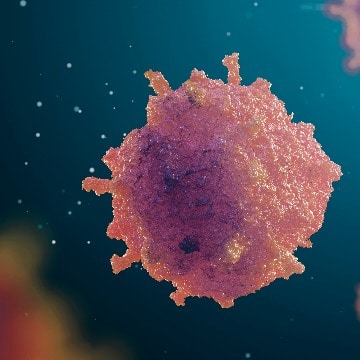Drug Delivery Through Artificial Metalloenzymes To Treat Cancer
Nikki Attkisson | Last Updated : April 27, 2021Metalloenzymes are protein enzymes comprising metal ions (cofactors) that directly bind to prosthetic groups or protein parts. These enzymes grip the metals a bit tightly, which are not voluntarily exchanged. Examples: alcohol dehydrogenase, carbonic anhydrase, aldolase containing zinc, etc., artificial metalloenzymes (ArMs) is a metalloprotein produced in the labs which is not a natural origin.
Drug Delivery Through Artificial Metalloenzymes To Treat Cancer
ArMs are hybrid catalysts that result from the integration of catalytically proficient metalloprotein into the protein framework. The major issues with ongoing cancer treatment effects are not restricted to malignant cells in the human body.

There are numerous side effects of chemotherapy, such as hair loss, nausea, nerve damage, fatigue, weakness, and many more. Researchers said that they had succeeded in treating cancer with metal-catalyzed chemical methodology in mice for the very first time. The metalloenzymes contain metal clusters, which are active centres that react with substrate forming intermediates temporarily.
Their marked geometric and electronic structures lead to unique properties of catalysis. Metalloenzymes (artificial gold-based enzymes) tag the proteins in the body; first, the tagging agent and metalloenzyme are injected into the body separately. Metalloenzyme ensues as glycosylated – sugar chains termed as glycans that adhere to its surface. Particular glycans are selected to allow binding to the targeted cells inside the body.
Thereafter the tagging agent counter with the metalloenzyme, can carry out the desired aim and tag the protein of engrossment on the cancer cells. By this, only malignant cells are targeted by glycosylated metalloenzyme tagged, perhaps.
The group carried out 2 major targeted drug delivery trials. The first trial employed a setup of RGD (Arginine-glycine-aspartic) that turned functional after acting with the artificial enzyme that bound to the specific target malignant cell. RGD was picked since prior testing specified that it impedes the capability of malignant cells to assemble all together and build tumors.
They injected HeLa cancer cells into the mice and thereafter injected both the RGD and glycosylated metalloenzyme into them. Then they were injected with the artificial enzyme alone, RGD alone, or saline into control mice.
The mice were kept on track for eighty-one days. While all the controls spread tumors and expired before eighty-one days hit, the mice were managed the RGD tagging, and precise cell therapy had survivability of 40%. Imaging analysis encountered that the tumor outbreak and development were interrupted because of the treatment.
The second trial was depicted to strike tumors that are pre-existing. The group employed the same glycosylated metalloenzyme, yet with the set-up of non-toxic doxorubicin that cast functional after responding with the metalloenzyme. Prior trailing indicated that the agent was benign until it collides with the metalloenzyme; at the time, it emits toxic doxorubicin. This is how only specified targeted malignant cells were distressed over the drug. Mice trailing was the same as trailing with RGD, but the tumors were permitted to advance for a week before injecting the tagging agent and artificial enzyme.
The mice subjected to genuine treatment came up with reduced cancer growth and high survivability across the course of seventy-seven days. “Thereafter, the next move is probably clinical employment in humans”, Researchers say.
With over 15 years as a practicing journalist, Nikki Attkisson found herself at Powdersville Post now after working at several other publications. She is an award-winning journalist with an entrepreneurial spirit and worked as a journalist covering technology, innovation, environmental issues, politics, health etc. Nikki Attkisson has also worked on product development, content strategy, and editorial management for numerous media companies. She began her career at local news stations and worked as a reporter in national newspapers.
